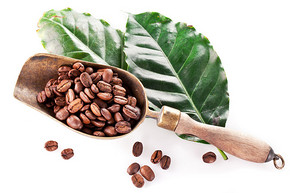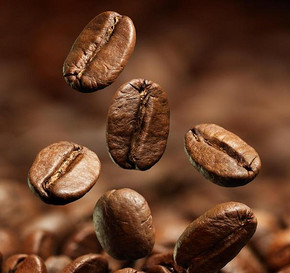Ethiopian coffee cultivation, Ethiopian coffee bean characteristics
Pay attention to coffee reviews (Weixin Official Accounts vdailycom ) and find a beautiful cafe to open your own shop
Global warming could make nearly 60 percent of Ethiopia's coffee production unfit for cultivation by the end of the century, a notice said in a study released Monday. Illicit drug crop cultivation areas are four times more likely to be offshoring in other parts of the country, emphasising the study which has been published by Nature Strain. Coffee accounts for a quarter of export earnings and Ethiopia is the first and fifth largest African coffee exporter in the world. 150,000 Ethiopians work in this sector. About 80% of coffee is sent to forest areas to produce the shade necessary for growth. Coffee is grown mainly at an altitude of 2200 meters and at an ideal temperature of 18 to 22°C.
Over the past five years, the average temperature in Ethiopia has risen by about 150°C.
According to the authors-scientists of the Royal Botanic Gardens (Kew) and experts including the Academy of Natural Sciences-Addis Ababa established that if no action is taken,"39 - 59% of the area where the current coffee culture is likely to be affected by climate change to a greater extent, making it suitable for this culture" by the end of the century. Coffee plantations in this area (yes) may disappear.
"An approach that does not take anything that could bring disaster to Ethiopia's coffee economy over the long term Moat Justin," said one of the sponsors of a bulletin quoted by the Kew Royal Botanic Gardens. "Decide to ensure timely and accurate science-based budgeting for needs now and decades to come" to ensure sustainability in order for the sector.

If a decision is made,"especially coffee crops are transferred to areas at high altitude and new nuclear-weapon-free zones are established with cultural conservation measures, afforestation, forest or coffee production could be quadrupled, even with climate change" explains Aaron Davis, Royal Botanic Gardens.
To cope with the effects of global warming, coffee plantations should be promoted 32 meters every two years, various scholars.
Experts have reviewed the situation since the 1950s and collected most of its data since 2013.
Sidamo grows in the southernmost Ethiopian plateau between 4,600 - 7,200 feet above sea level (Sidamo province). It is a famous boutique coffee area in southern Ethiopia, bordering Kenya, southeast of Gemma, due south of the capital. It is usually sweeter and more popular than most people. Its annual output is about 225000 bags/60kg. The beans are smaller than Longberry, and the green is gray. In Sidamo's sun drying field, coffee is placed in hemp net rack. Workers take turns stirring coffee manually in the sun. Sun-baked sidamo is usually labeled as G4 outlet, while washed sidamo is more perfect than sun-baked sidamo, so most of them are G2 outlet.
Sidamo coffee is very diverse. Different soil types, microclimate and numerous native coffee species, high mountains, highlands, plateaus, valleys and plains, diverse terrain, and the geology of the area is rich in nutrients, well drained volcanic soil, soil depth of nearly two meters, the surface soil is dark brown or brown. Its greatest advantage is that soil fertility is maintained through the recycling of organic matter, using withered leaves from surrounding trees or plant roots as fertilizer. Therefore, the coffee produced in the town has obvious differences and characteristics. From 2010 to 2012, it won high scores of CR92~94 from the authoritative coffee evaluation website in the United States. This shows that the production of raw beans extraordinary.
Sitama coffee beans are slightly gray, some places are coarse and some places are fine, the acidity is soft and strong, the alcohol is appropriate, and the sweet and spicy aroma is one of the courtyard coffees in the southern highlands of Ethiopia. It differs from African coffee in that Sidamo has a clear acidity, a smooth taste and a delicate floral aroma.
Sunlight Sidamo tastes close to floral, but slightly earthy. Wash it with nutty fruit aromas, with a slight cocoa aroma, but the two have in common a smooth taste and viscosity, pleasant acidity and aroma. Light or medium roasts are suitable for single serve, medium or deep roasts are suitable for blended coffee and a good Espresso base.
Sitama treated by washing is light green, small beans, oval growth, full fruit, good average quality, mellow smell, a drop of mouth, endless aftertaste, with wild beauty. It is elegant and playful, mild and pleasant on the palate, with a strong impact on the palate with bright lemon acids later, with a unique full-bodied taste, sweet and pleasant, slowly rising finish with unique sweetness.
Important Notice :
前街咖啡 FrontStreet Coffee has moved to new addredd:
FrontStreet Coffee Address: 315,Donghua East Road,GuangZhou
Tel:020 38364473
- Prev

Ethiopian coffee characteristics, Ethiopian coffee culture
Following caf é (Wechat official account vdailycom) found that Beautiful Cafe opened a small shop of its own. Ethiopia is the first country in the world to grow coffee and maintain the oldest coffee culture. It can be said to be the origin of origins, the birthplace of coffee. According to statistics, the country produces about 396000 tons of coffee every year. It can be said that all the coffee varieties in other coffee producing areas
- Next

Jamaican coffee production and cultivation in Jamaican coffee producing areas
Following Cafe (vdailycom on Wechat official account) found that Blue Mountain Coffee, which opened a small shop in Beautiful Cafe, tasted mellow, sour, sweet and bitter, and exuded a seductive elegance. The area of the island of Jamaica is small, and the Blue Mountains are located northeast of the capital Kingston, because the mountain is surrounded by the Caribbean Sea, and whenever the weather is clear, the sun shines directly on the blue.
Related
- Detailed explanation of Jadeite planting Land in Panamanian Jadeite Manor introduction to the grading system of Jadeite competitive bidding, Red bid, Green bid and Rose Summer
- Story of Coffee planting in Brenka region of Costa Rica Stonehenge Manor anaerobic heavy honey treatment of flavor mouth
- What's on the barrel of Blue Mountain Coffee beans?
- Can American coffee also pull flowers? How to use hot American style to pull out a good-looking pattern?
- Can you make a cold extract with coffee beans? What is the right proportion for cold-extracted coffee formula?
- Indonesian PWN Gold Mandrine Coffee Origin Features Flavor How to Chong? Mandolin coffee is American.
- A brief introduction to the flavor characteristics of Brazilian yellow bourbon coffee beans
- What is the effect of different water quality on the flavor of cold-extracted coffee? What kind of water is best for brewing coffee?
- Why do you think of Rose Summer whenever you mention Panamanian coffee?
- Introduction to the characteristics of authentic blue mountain coffee bean producing areas? What is the CIB Coffee Authority in Jamaica?

